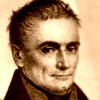Remarks to the history of Assisted Reproduction
Experimental basis of assisted reproduction
The first basis for assisted reproduction in humans was experimental work on animals, published by a number of authors over the last 120 years.
Probably the first to describe ovarian follicles and corpus luteum already in the 16th century was the prominent Brussels anatomist A. Vesalius (Shon, 1977). However, the discovery of the ovarian follicle is attributed to R. de Graaf (1672) and large antral follicles are still called Graafian follicles. In 1677, A. van Leeuwenhoek published his observations on mammalian sperm. C. E. von Baer found an egg in the ovarian follicle of a dog (1827). In this context, it is necessary to remember the fundamental discovery of our J.E. Purkyně from 1825, who described the vesicula germinativa in a bird's egg — the germinal vesicle (Purkinje, 1830), identified as the cell nucleus with the origin of the cell theory. To this day, the nucleus of the oocyte before the meiosis resumption is referred to as the germinal vesicle (GV) in the scientific literature.
|
Efforts to fertilize mammalian eggs in vitro date back to 1878, when experiments with rabbit and guinea pig oocytes were described by S. L. Schenk from Vienna. The first transfer of a mammalian (rabbit) embryo into the uterus was carried out in 1890 by W. Heape and resulted in the birth of six offsprings. In 1930, G. Pincus was successful, he fertilized rabbit oocytes in vitro with sperm from the epididymis. He observed the formation of the pronuclear stage and the cleavage of the egg. Four years later, together with E.V. Enzemann (Pincus and Enzmann, 1934), they transferred rabbit oocytes after short-term incubation with epididymal spermatozoa back to the recipient, and the result was pregnancy and the birth of viable young. In 1944, J. Rock and M. F. Menkin described the fertilization of the human oocyte in vitro and its development into two- and three-cell embryos. Hammond (1949) successfully cultured 8-cell mouse embryos up to the blastocyst stage. A significant discovery, independently obtained by C.R. Austin and M.C Chang in 1951, was the finding that for the fertilizing ability of the sperm, its previous stay in the genital tract of the female is necessary; it was the discovery of sperm capacitation.
Important from the point of view of endocrinological approaches to assisted reproduction was the work of Changov in 1955, in which he described the induction of oocyte maturation in vivo by injection of hCG. McLaren and Biggers (1958) succeeded in transferring a cultured mouse blastocyst into the uterus of another female, with subsequent normal development of the embryo. In 1959, M.C. Chang performed in vitro fertilization and embryo transfer in a rabbit.
The beginnings of assisted reproduction
R.G. Edwards and his collaborators are associated with the beginnings of human assisted reproduction. In 1965 he first wrote about human gametes (maturation of human oocytes in vitro), in 1966 he described together with R.P. Donahue, T.A. Baramki and H.W. Jones first attempts to fertilize human oocytes. He published the first stages of development after fertilization in 1969 with B.D. Bavister and P.C. Steptoe. The work published in 1971 in Nature together with P.C. Steptoe, and J.M. Purdy, in which he demonstrated the ability to culture early human embryos in vitro to the blastocyst stage. In addition to embryological research, at this time R.G. Edwards also participated in the improvement of ovarian stimulation methods, oocyte collection and other methods necessary for practical application. Already in 1974, he published an extensive work on the moral, ethical, and legal problems of in vitro fertilization of human eggs. The application of laparoscopy in gynaecology, pioneered by P. C. Steptoe, who by 1968 had performed more than 1,300 laparoscopic procedures (Steptoe, 1969), was significant for the possibility of ovarian egg retrieval in women.
The first result of the clinical application of in vitro fertilization was published by P.C. Steptoe and R.G. Edwards in 1976 in the Lancet, the pregnancy then ended up being ectopic. They described the first completely successful result in 1978 in the same journal.
Trounson and Mohr (1983) described human pregnancy after cryopreservation and subsequent transfer of an 8-cell embryo.
|
Czech Republic, Brno and assisted reproduction
It is an undeniable fact that Brno can be considered the cradle of assisted reproduction methods in the Czech Republic and one of the most important centres of research and application of reproductive biology in Europe. Assisted reproduction methods are based on a thorough knowledge of early human embryology and the physiology of human reproduction. The first theoretical foundations of human embryology were laid in Brno before World War II. The head of the Institute of Histology and Embryology of the Faculty of Medicine, Masaryk University, prof. Florian, who, however, was killed in a concentration camp and could not finish his work. This discipline achieved extraordinary development in the post-war period thanks to prof. K. Mazanec, who introduced electron microscopy and histochemical methods to the study of early mammalian embryos and published his monograph Human Blastogenesis in several languages.
These classics were then followed up by the experimental work of a team led by prof. M. Dvořák, dedicated to the detailed study of the ultrastructure and histochemistry of early mammalian embryos, which resulted in the publication of several priority publications abroad, including two monographs with international acclaim.
In 1978, Luise Brown was born in Great Britain as the first child conceived outside the mother's organism. It was a great inspiration for the prepared and the first collaboration on a prospective clinical application was agreed upon by prof. M. Uher, then head of the First Women's Clinic, and prof. M. Dvořák, then head of the Department of Histology and Embryology. At the preparatory meetings in the summers of 1979-1980, a team of those who invented and elaborated work procedures and implemented them with their own hands, with the help of many collaborators - J. Tesařík, L. Pilka and P. Trávník - was formed.
Hard work in more than modest conditions brought the first results. In 1982, thanks to the aforementioned team, the first "test tube" baby was born not only in what was then Czechoslovakia, but also in the entire Eastern bloc at that time.
With the departure of Prof. Pilka on II. Women's Clinic, the number of workplaces performing assisted reproduction procedures expanded, at the I. Women's Clinic, the issue of assisted reproduction was taken up by Pavel Ventruba, student of prof. Pilka. With prof. Pilka left for II. Women's Clinic, his other student, Jan Veselý.
Outside of Brno, assisted reproduction soon began to develop at the Faculty of Medicine of the University of Olomouc under the leadership of Prof. František Gazárek and at the Institute for Mother and Child Care in Prague under the leadership of Tonko Mardešič.
The workplace also developed new diagnostic and treatment procedures for infertile couples. Some of these methods have lost their importance over time, while others have become a permanent asset and have evolved into standard practices. The experience and knowledge of the team from the first 10 years of the application of assisted reproduction were summarized in 1990 in the monograph In vitro fertilization and embryo transfer in the treatment of human infertility (in Czech) by M. Dvořák, Z. Čupr, L. Pilka, J. Tesařík and P. Trávník.
The 1990s brought a substantial improvement in the material conditions for the treatment of infertility by methods of assisted reproduction. Changes in society and in the healthcare, sector resulted in the creation of the first non-state assisted reproduction centres in the Czech Republic.
Current state of assisted reproduction
Since the 1980s, the results of cryopreservation of sperm, eggs and early embryos have greatly improved. They can be kept frozen for further use with minimal loss of viability and applied both in cases where the previous embryo transfer was unsuccessful, and where the woman successfully gives birth to a child and wants to have another. Vitrification methods enable very successful cryopreservation of eggs and embryos, so there is nothing to prevent transferring only one embryo in each cycle and keeping the others for further transfers. Pre-implantation genetic testing has made great progress, allowing embryos to be transferred to the uterus without chromosomal defects (for example, translocations) or harmful mutations (cystic fibrosis, haemophilia, neurofibromatosis, and many others). Current genetic testing methods, such as karyomapping, next-generation sequencing, and others, make it possible to simultaneously examine different combinations of genetic defects in embryos. In the case of congenital defects, we are no longer exclusively dependent on prenatal diagnosis with subsequent termination of pregnancy with severe foetal impairment. The safety of hormonal stimulation of the ovaries has increased and the proportion of multiple pregnancies after assisted reproduction methods has significantly decreased. The proportion of pregnant women after using assisted reproduction methods reaches around 50% per attempt, and the cumulative success rate (including transfers of frozen embryos from the same egg collection) exceeds 80%. The share of children born after the use of assisted reproduction methods varies from 4 to 15% in European countries. Most of couples who were involuntarily childless now have a real chance of having a child.
References:
Dvořák M., Čupr Z., Pilka L., Tesařík J., Trávník P. In vitro fertilization and embryo transfer in the treatment of human infertility (in Czech). Acta Fac. Med. Univ. Brun., Brno;1990:157s. ISBN 80-210-0166-6.
Trávník P. In Vitro Fertilization - Nobel Prize in Medicine in 2010 (in Czech). Vesmír 90(1):12-3. ISSN 1214-4029.
| May 2024 | |||||||
| Week Nr | 18 | 19 | 20 | 21 | 22 | 23 | 24 |
| Monday | 6 | 13 | 20 | 27 | |||
| Tuesday | 7 | 14 | 21 | 28 | |||
| Wednesday | 1 | 8 | 15 | 22 | 29 | ||
| Thursday | 2 | 9 | 16 | 23 | 30 | ||
| Friday | 3 | 10 | 17 | 24 | 31 | ||
| Saturday | 4 | 11 | 18 | 25 | |||
| Sunday | 5 | 12 | 19 | 26 | |||
Updated the August 20th 2023











